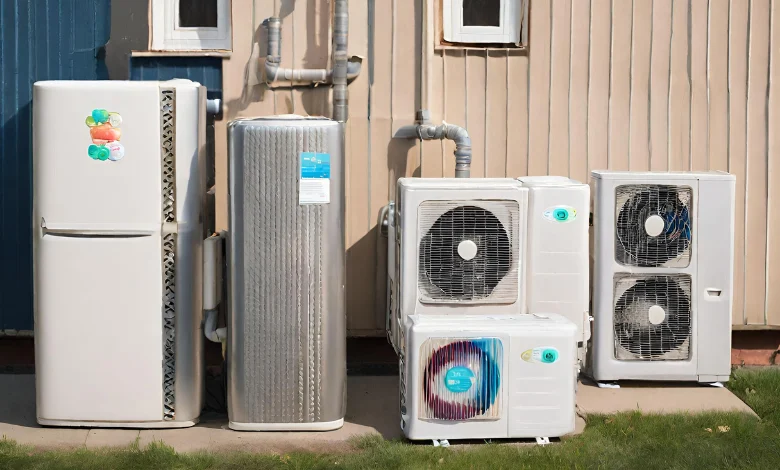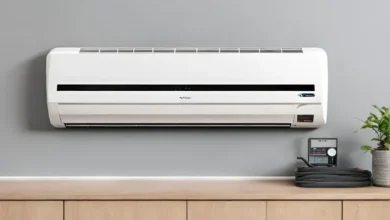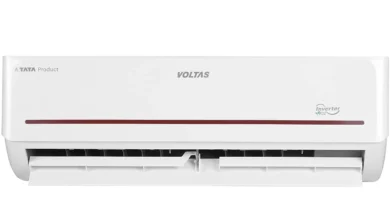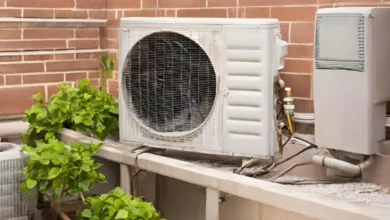Comparing Different Types of Refrigerants and Their Effects on Air Quality

Welcome to the world of air conditioning! Have you ever wondered about the stuff that makes your AC work its magic? It’s called refrigerant, and it’s like the unsung hero of cool air. This blog is here to spill the beans on what refrigerants do and how they impact the air we breathe. We’re going behind the scenes of HVAC tech, exploring how these refrigerants influence the environment and the air quality inside our homes.
Also read: Best AC in India 2024
So, buckle up for a journey where we break down the nitty-gritty of different refrigerants. We’ll chat about how they affect the world around us and spark a conversation on making smart choices for both comfort and the planet. Join us at the intersection of staying cool and being eco-friendly – where refrigerants and air quality do a little dance. Let’s dive into this cool world in simple terms!
I. Comparing Different Types of Refrigerants and Their Effects on Air Quality
A. Brief Overview of the Importance of Choosing the Right Refrigerant for Air Quality
In the intricate tapestry of air conditioning, the choice of refrigerant stands as a pivotal decision, transcending the realms of simple cooling efficiency. Beyond the immediate comforts it provides, the selection of the right refrigerant holds profound implications for the environment and, consequently, air quality. This introduction seeks to underscore the critical nature of this decision, emphasizing that it is not merely about personal comfort but a strategic step towards environmental responsibility.
B. Significance of Understanding the Impact of Different Refrigerants on Indoor and Outdoor Air
The impact of refrigerants extends far beyond the confines of the conditioned space. It reverberates both indoors and outdoors, demanding a holistic understanding of their implications. From the potential depletion of the ozone layer to the quality of indoor air, these consequences necessitate a nuanced perspective. This section aims to highlight that a well-informed consideration of refrigerant choices is essential for crafting HVAC systems that contribute positively to the environment.
C. Purpose of the Blog – To Compare Various Types of Refrigerants and Their Effects on Air Quality
This blog’s primary purpose is to transcend the superficial examination of refrigerants, transforming into a comprehensive guide for industry professionals and consumers alike. By delving into the intricacies of different refrigerants, the goal is to provide profound insights that empower decision-makers. The focus is not only on achieving optimal cooling performance but also on cultivating a conscientious approach towards the environment.
II. Common Types of Refrigerants
A. Introduction to Widely Used Refrigerants in Air Conditioning Systems
Refrigerants, often overlooked in their ubiquity, are the lifeblood of air conditioning systems. This section will provide a more in-depth introduction, offering readers a journey through the historical evolution of widely used refrigerants. It will spotlight their chemical compositions, elucidating how these formulations have shaped the trajectory of air conditioning technologies.
B. Overview of Refrigerant Classifications (HFCs, HCFCs, HFOs, Natural Refrigerants)
Understanding refrigerant classifications is a gateway to evaluating their environmental impact. This section will delve into the intricacies of Hydrofluorocarbons (HFCs), Hydrochlorofluorocarbons (HCFCs), Hydrofluoroolefins (HFOs), and natural refrigerants. Readers will gain a deeper understanding of the advantages and drawbacks associated with each classification, fostering a nuanced comprehension of their roles in the HVAC landscape.
C. The Prevalence of Each Type in the Market
Market prevalence is not merely a statistic; it is a dynamic reflection of industry trends and regulatory dynamics. This section will not only present statistics but will explore the factors that drive the adoption or phase-out of specific refrigerants. Readers will gain insights into the current landscape of refrigerant usage and the potential trajectories that lie ahead.
III. Environmental Impact of Refrigerants
A. Global Warming Potential (GWP) and Ozone Depletion Potential (ODP)
The environmental impact is a multifaceted consideration, and this section will provide a comprehensive exploration of the concepts of Global Warming Potential (GWP) and Ozone Depletion Potential (ODP). It will delve into the scientific intricacies, explaining how these metrics quantifiably measure the impact of refrigerants on climate change and ozone layer depletion.
B. Comparison of Environmental Impact Among Different Refrigerant Types
A mere mention of environmental impact is insufficient; readers need a detailed analysis. This section will present a thorough comparison, exploring how HFCs, HCFCs, HFOs, and natural refrigerants stack up against each other concerning GWP and ODP. This in-depth analysis will equip readers with a comprehensive understanding of the nuanced environmental footprints of different refrigerant types.
C. The Role of Refrigerants in Contributing to Climate Change and Air Pollution
The broader implications of refrigerants on climate change and air pollution merit a closer look. This section will go beyond theoretical discussions and delve into real-world examples and case studies. By providing concrete instances of the impact of refrigerants on the environment, readers will develop a deeper appreciation for the tangible consequences of their choices.
IV. Effects on Indoor Air Quality
A. Introduction to Potential Effects of Refrigerants on Indoor Air Quality
Indoor air quality is intimately linked with the choice of refrigerants. This section will offer a more nuanced introduction, exploring the intricacies of how the circulation of these chemical compounds can influence the composition of indoor air. The focus will be on how these effects manifest in real-world scenarios.
B. Volatile Organic Compounds (VOCs) and Their Connection to Certain Refrigerants
The relationship between refrigerants and Volatile Organic Compounds (VOCs) will be explored in greater detail. Specific examples and case studies will be used to illustrate how certain refrigerants release VOCs during operation, elucidating the potential health implications for occupants.
C. The Importance of Choosing Refrigerants with Minimal Impact on Indoor Air
This section will not only emphasize the importance of choosing refrigerants with minimal impact but will delve into practical considerations. It will explore strategies and technologies that can be employed to mitigate the impact of refrigerants on indoor air quality, ensuring that the pursuit of comfort does not compromise health.
V. Regulatory Measures and Standards
A. Overview of International and National Regulations Guiding Refrigerant Use
An expanded discussion on international and national regulations will provide readers with a thorough understanding of the legal landscape. This section will explore the genesis of regulations, their evolution, and their implications for the HVAC industry.
B. Compliance Requirements for Minimizing Air Quality Impact
Beyond a cursory overview, this section will elaborate on the specific compliance requirements that HVAC professionals must adhere to. Understanding the practical implications of regulations is essential for ensuring that air quality considerations are integrated into every facet of the industry.
C. Efforts to Phase Out Environmentally Harmful Refrigerants
An in-depth exploration of global initiatives, such as the Kigali Amendment, will provide readers with a comprehensive view of efforts to phase out environmentally harmful refrigerants. This section will delve into the progress made, challenges faced, and the anticipated impact of such initiatives on the HVAC landscape.
VI. Innovations in Environmentally Friendly Refrigerants
A. Introduction to Advanced Refrigerants Designed for Improved Air Quality
This section will not only introduce advanced refrigerants but will delve into the underlying technologies that make them environmentally friendly. Readers will gain insights into the chemistry and engineering innovations that drive the development of these advanced solutions.
B. Low-GWP and Low-Toxicity Options
An expanded discussion on low-GWP and low-toxicity options will provide readers with a detailed exploration of the characteristics that make these refrigerants environmentally preferable. Case studies and real-world examples will be used to highlight their practical application and efficacy.
C. Technological Advancements in Creating Sustainable Alternatives
The quest for sustainable alternatives has led to technological advancements in refrigerant development. This section will offer a more comprehensive exploration, from novel materials to innovative manufacturing processes, readers will gain insights into the forefront of refrigerant technology.
VII. Case Studies and Research Findings
A. Real-World Examples of the Impact of Different Refrigerants on Air Quality
This section will feature a more extensive array of real
-world examples, showcasing diverse scenarios where the choice of refrigerant had tangible consequences on air quality. Case studies will be explored in detail, drawing lessons from both successful implementations and challenges faced.
B. Scientific Research on the Effects of Refrigerants on the Environment and Health
A more thorough exploration of scientific research findings will provide readers with a deeper understanding of the complexities involved. The section will go beyond summaries, delving into methodologies, key findings, and the implications of research on industry practices.
C. Lessons Learned from Case Studies and Implications for Industry Practices
The lessons derived from case studies and research findings will be presented in a more nuanced manner. Rather than simply listing takeaways, this section will offer a reflective analysis, highlighting the broader implications for industry practices and decision-making.
VIII. Balancing Performance and Air Quality
A. Discussion on the Trade-Off Between Refrigerant Performance and Environmental Impact
The trade-off between performance and environmental impact is a delicate balancing act. This section will feature a more extensive discussion, exploring strategies employed by industry professionals to navigate this complex terrain successfully.
B. Strategies for Achieving Optimal Air Quality Without Compromising System Efficiency
Practical strategies for achieving optimal air quality without compromising system efficiency will be explored in greater depth. Case studies of successful implementations will provide readers with actionable insights into striking the right balance.
C. The Role of Consumer Awareness in Promoting Environmentally Conscious Choices
An expanded discussion on consumer awareness will delve into the role of education and information dissemination in shaping consumer choices. The section will explore successful campaigns and initiatives that have effectively raised awareness and influenced consumer preferences.
IX. Future Trends in Refrigerants and Air Quality
A. Emerging Technologies and Trends in the Development of Eco-Friendly Refrigerants
Readers will be taken on a more comprehensive journey into the future, exploring emerging technologies and trends that will shape the development of eco-friendly refrigerants. This section will delve into futuristic concepts and breakthroughs on the horizon.
B. Anticipated Improvements in Air Quality with the Adoption of New Refrigerants
Rather than a brief mention, this section will provide a detailed exploration of how the adoption of new refrigerants is anticipated to bring about improvements in air quality. Projections, supported by industry insights and research, will paint a vivid picture of the potential positive impacts.
C. The Evolving Landscape of the HVAC Industry Towards Sustainability
An expanded discussion on the evolving landscape of the HVAC industry will include a more thorough examination of sustainability practices. This section will explore industry-wide initiatives, collaborations, and innovations that signal a shift towards a more sustainable future.
X. Conclusion
A. Recap of the Key Points in Comparing Different Types of Refrigerants and Their Effects on Air Quality
In summarizing this extensive exploration, a recap will not merely summarize but distill key points into actionable insights. This section will serve as a comprehensive synthesis, reminding readers of the critical considerations in refrigerant choices and their impacts on air quality.
B. Call to Action for Industry Professionals and Consumers to Prioritize Both Efficiency and Environmental Impact
The call to action will be reinforced, urging industry professionals and consumers alike to embrace a collective responsibility. Rather than a generic call, this section will provide tangible steps and recommendations for implementing environmentally conscious practices in both professional and personal spheres.
C. The Role of Informed Decision-Making in Fostering a Healthier and More Sustainable Approach to Air Conditioning
The concluding thoughts will emphasize the ongoing importance of informed decision-making. It will not only underscore the need for knowledge but will also provide a vision for how a more informed and conscientious approach can lead to a healthier and more sustainable future in air conditioning.






